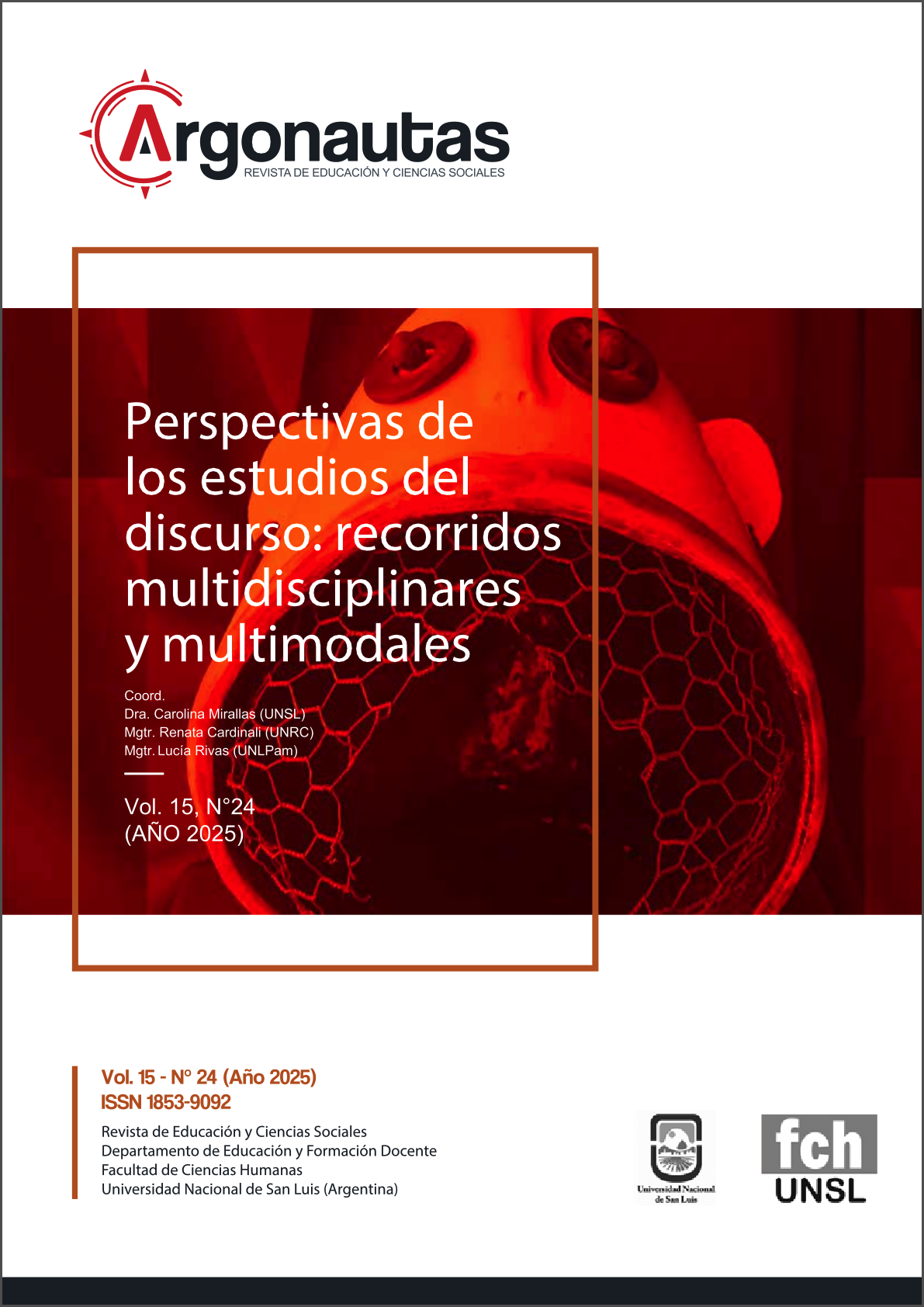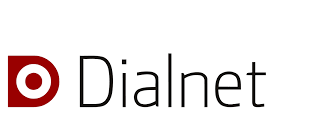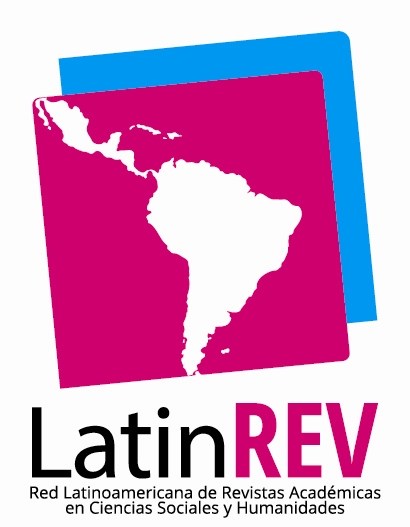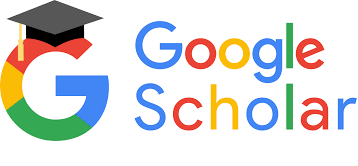From paper to transmedia reading: A didactic proposal for EFL courses at university level
Keywords:
multimodality, transmedia reading, EF, research articles, higher educationAbstract
The courses of English for Specific Purposes in undergraduate programs of the School of Health at the National University of San Luis are oriented around the work around three fundamental points: 1) reading tasks; 2) linguistic contents; and 3) digital reading strategies. These are addressed simultaneously as spirally structured content, favoring a student-centered approach and focused on the development of multiple reading comprehension competencies. In this paper, we present a didactic proposal to approach digital disciplinary texts in English as Foreign Language from a multimodal reading perspective. Following institutional curricula, the focus of these ESP courses is on the development of reading comprehension, for which the research article has been selected as a prototypical genre to address the proposed objectives. Working with online texts implies the development of search, access and text selection skills, as well as hypertext reading skills, that is, the reading of interactive and dynamic texts as digital objects. This promotes a form of reading that is not linear but transmedia and which has potential for the development of cognitive and metacognitive skills for interaction in multidimensionality. As digital ecosystems of foreign language teaching and learning are increasingly more and more complex, so are teachers’ challenges as mediators between multimodal texts and learners, hence the need to promote reflection on new ways of reading.
Downloads
References
Albarello, F. J. (2019). Lectura transmedia: leer, escribir, conversar en el ecosistema de pantallas. Buenos Aires: Ediciones Ampersand.
Bateman, J., Wildfeuer, J. y Hippala, T. (2017). Multimodality: Foundations, Research and Analysis - A Problem-Oriented Introduction. Berlin: Mouton de Gruyter.
Bhatia, V. (2013). A generic view of academic discourse. In J. Flowerdew (Ed.). Academic discourse (pp. 21-39). London: Routledge.
Blanco, N. (2006). “Saber para Vivir”. En A. Piussi y A. M. Mañeru, Educación, nombre común femenino (158-183). Barcelona: Editorial Octaedro.
Blom, H., Segers, E., Knoors, H., Hermans, D., Verhoeven, L. (2018). “Comprehension and navigation of networked hypertexts”. Journal of Computer Assisted Learning, 34(3), 306-314. Recuperado de: https://doi.org/10.1111/jcal.12243
Bourdais, A. y Guichon, N. (2020). Représentations et usages du traducteur en ligne par les lycéens. Alsic, 23(1). Recuperado de: https://doi.org/10.4000/alsic.4474
Cicala, R. y Quadrana. D. (2023). Objetos Digitales [Material de estudio, Unidad 3, Curso de Posgrado Las Lenguas Extranjeras en la Cultura Digital]. Universidad Nacional de Luján.
Cicala, R. (2021). “Producción, circulación y consumo de materiales didácticos digitales: algunos debates para la formación docente”. En G. M. Carbone, J. Rodríguez Rodríguez, N. M., Días García, T. M. F. Braga Garcia (Eds). Investigaciones sobre libros de texto y medio de enseñanza. Contribuciones desde América Latina (565-581). Universidade Federal do Paraná/NPPD.
Halliday, M. A. K. (1978). Language as social semiotics: the social interpretation of language and meaning. London: Edward Arnold.
Hyon, S. (2018). Introducing genre and English for Specific Purposes. London: Routledge.
Hyland, K. (2006). English for academic purposes: An advanced resource book. London: Routledge.
Klett, E. (2021). “La clase invertida y las lenguas extranjeras: análisis crítico”. En: E. Klett. Temas de hoy en didáctica de las lenguas extranjeras (26-50). Buenos Aires: Editores Asociados.
Kress, G. & Van Leeuwen, T. (1996). Reading Images: The Grammar of Visual Design. London: Routledge.
Litwin, E. (2008). El oficio de enseñar. Condiciones y contextos. Buenos Aires: Paidós.
Martin, J. R. (1992). English text: System and structure. Philadelphia/Amsterdam: John Benjamins Publishing Company.
Martin, J. (2002). “Fair trade: Negotiating meaning in multimodal texts”. In P. Coppock (Ed.), The semiotics of writing: Transdisciplinary perspectives on the technology of writing (311-338). Begijnhof, Belgium: Brepols & Indiana University Press.
Martin, J. R. & Rose, D. (2008) Genre relations: Mapping cultures. Equinox.
Pedranzani, B., Pereira, N., Aguirre, M., Pérez, M. y Porta, M. J. (2017). Alternativas para pensar la clase [Documento de cátedra. Espacio curricular: Didáctica y Currículum]. Facultad de Ciencias Humanas. Universidad Nacional de San Luis.
Scolari, C. (2016ª). “El translector. Lectura y narrativas transmedia en la nueva tecnología de la comunicación”. En J. A. Millám (Coord.), La lectura en España. Informe 2017 (175-186). Federación de Gremios de Escritores de España. Recuperado de: http://www.fge.es/lalectura/2017/default.html
Scolari, C. (2016b). “Albabetismo transmedia: estrategias de aprendizaje informal y competencias mediáticas en la nueva ecología de la comunicación”. TELOS (103). Recuperado de: https://telos.fundaciontelefonica.com/archivo/numero103/
Steiman, J. (2008). Más didáctica (en la educación superior). Buenos Aires: Miño y Dávila Editores - UNSAMedita.
Swales, J. (1988). Episodes in ESP: A Source and Reference Book on the Development of English for Science and Technology. 2nd impression. New York: Prentice – Hall.
Swales, J. (1990). Genre analysis. English in Academic and Research Settings. Cambridge: Cambridge University Press.
Swales, J. (2004). Research genres. Exploration and Applications. Cambridge: Cambridge University Press.
Unsworth, L. (2006). Towards a metalanguage for multiliteracies education: Describing the meaning-making resources of language-image interaction. English Teaching: Practice and Critique 5(1), 55-76.
Unsworth, L. & Cleirigh, C. (2009). “Multimodality and reading: The Construction of meaning through image-text interaction”. In C. Jewitt (Ed.), Handbook of Multimodal Analysis (151-164). London: Routledge.







